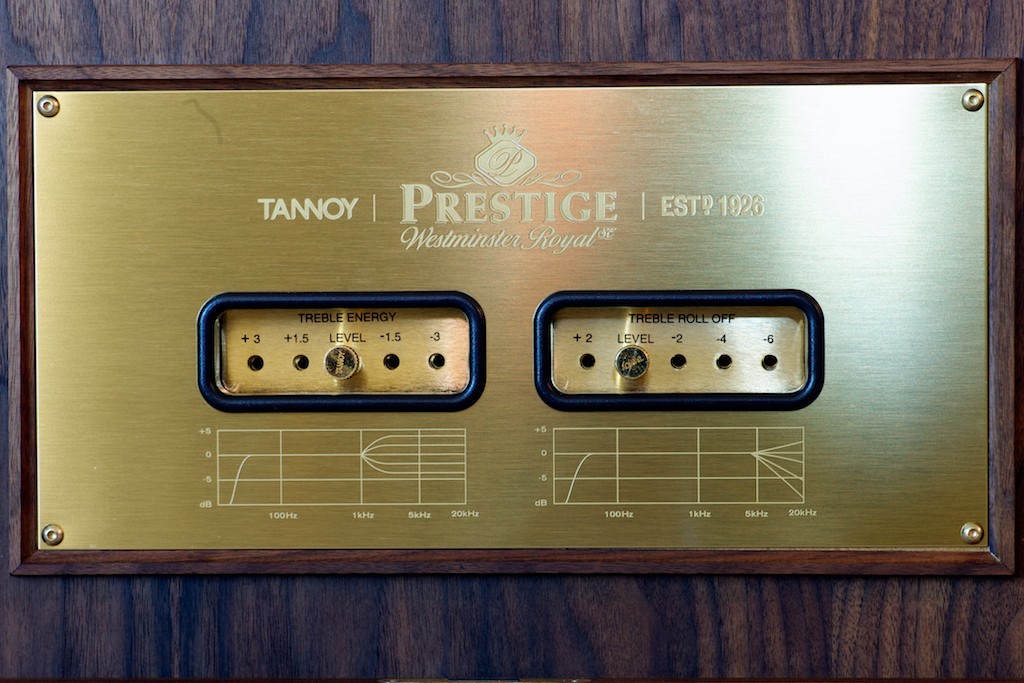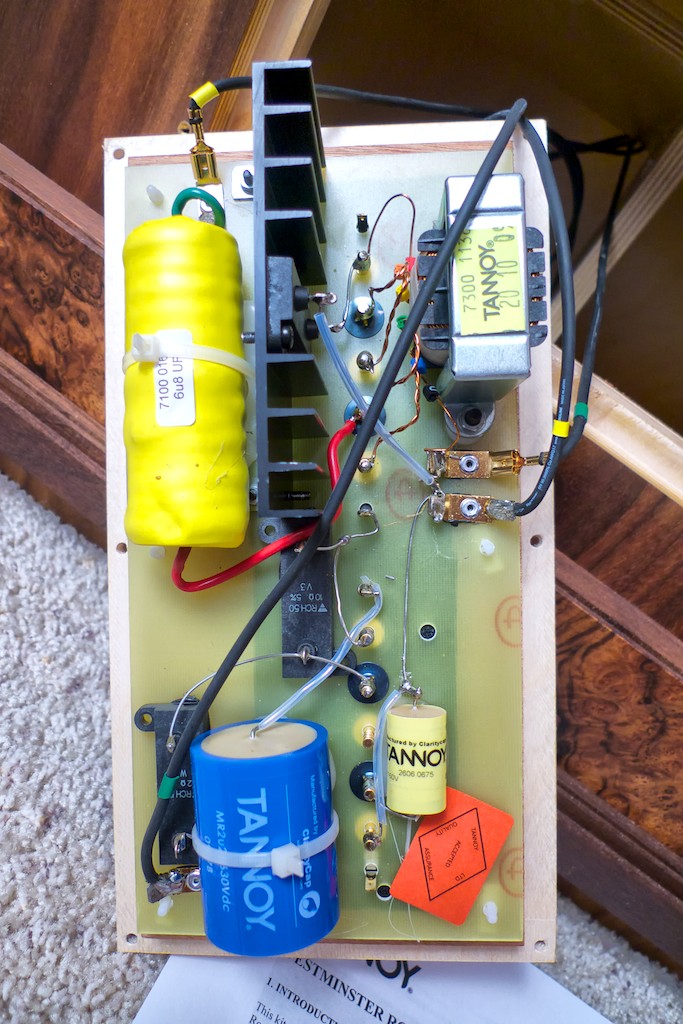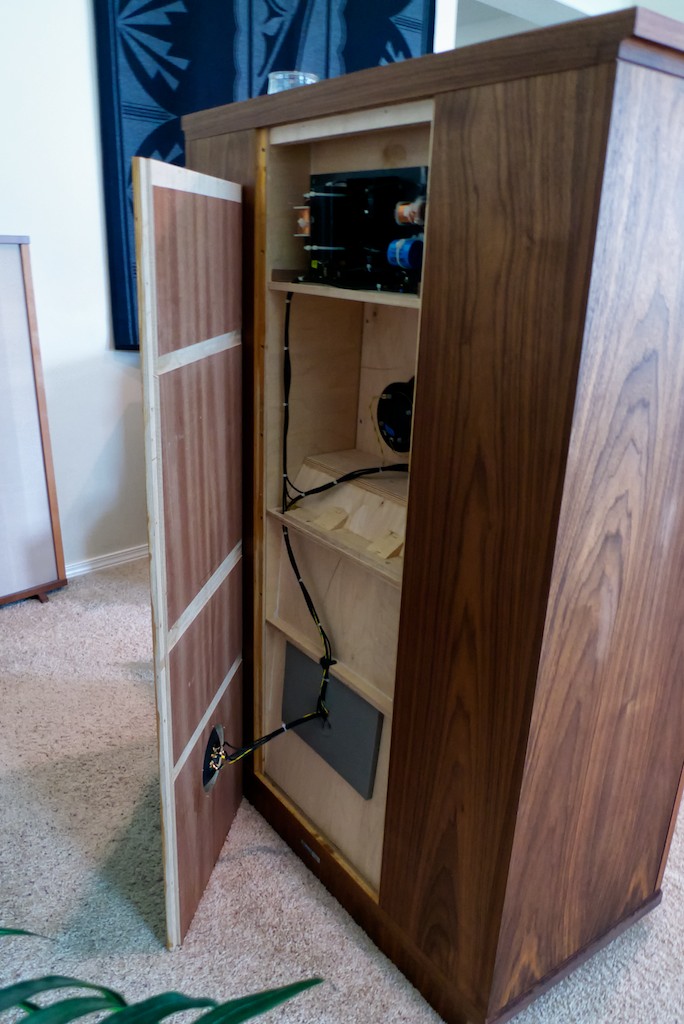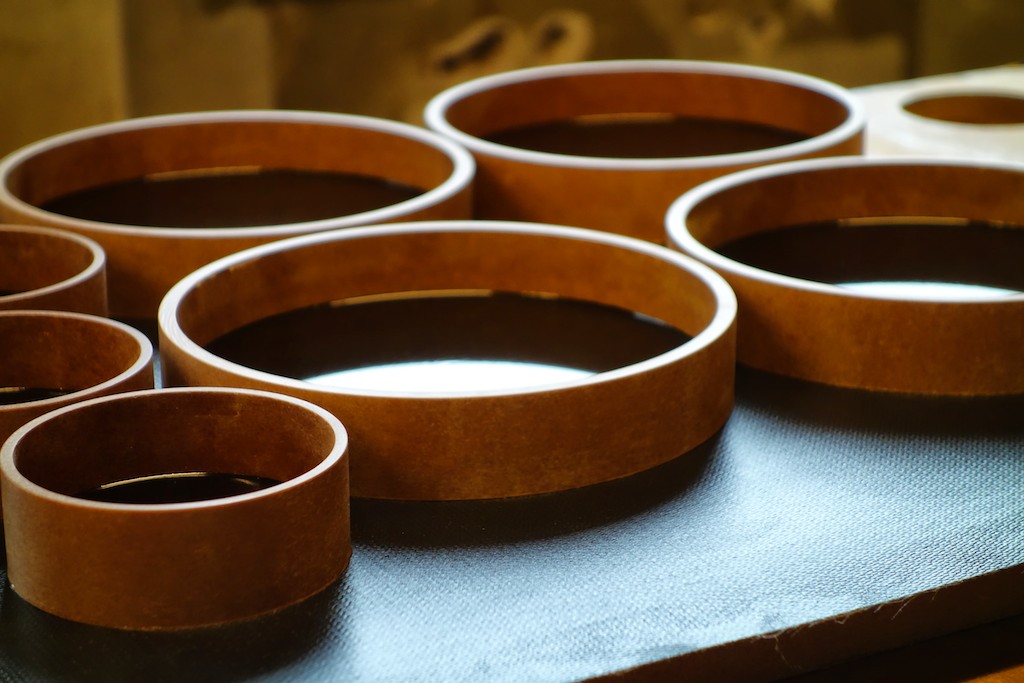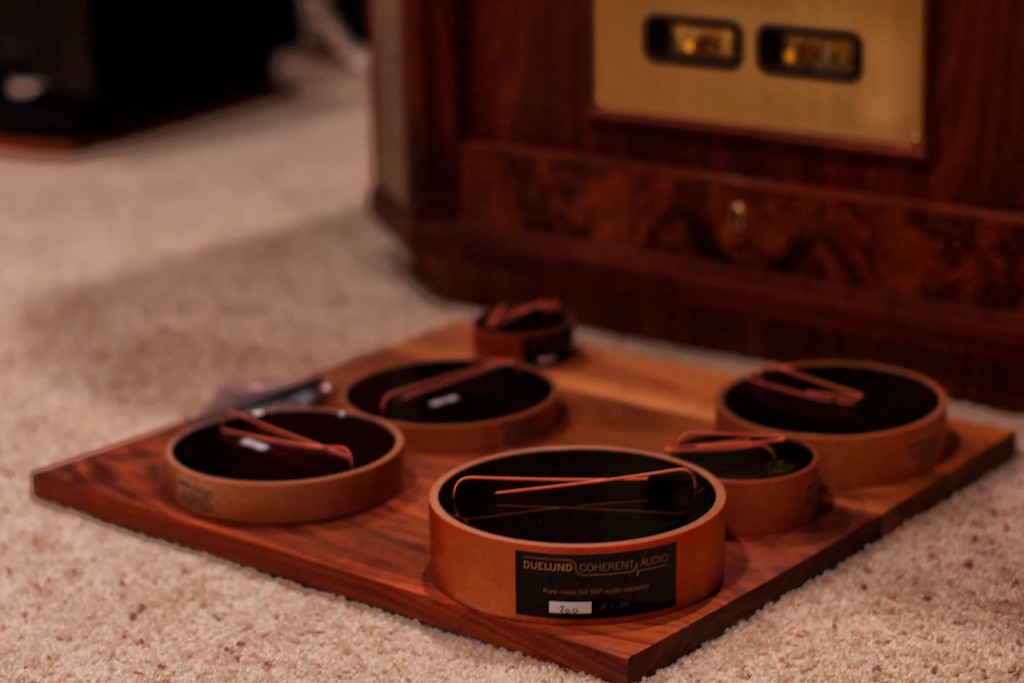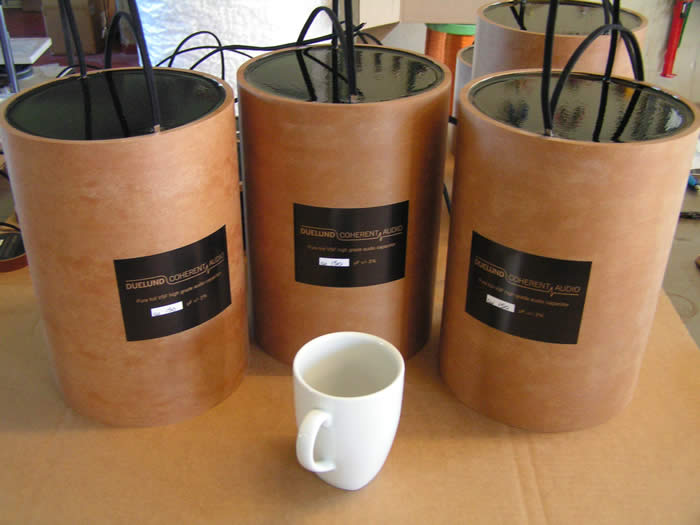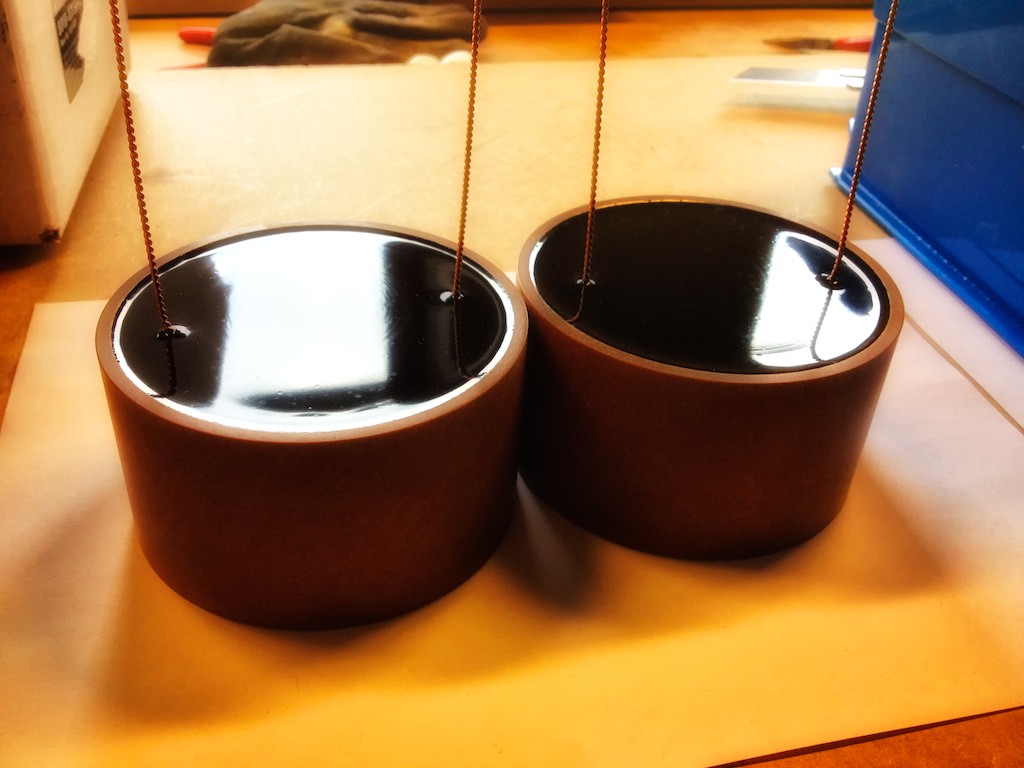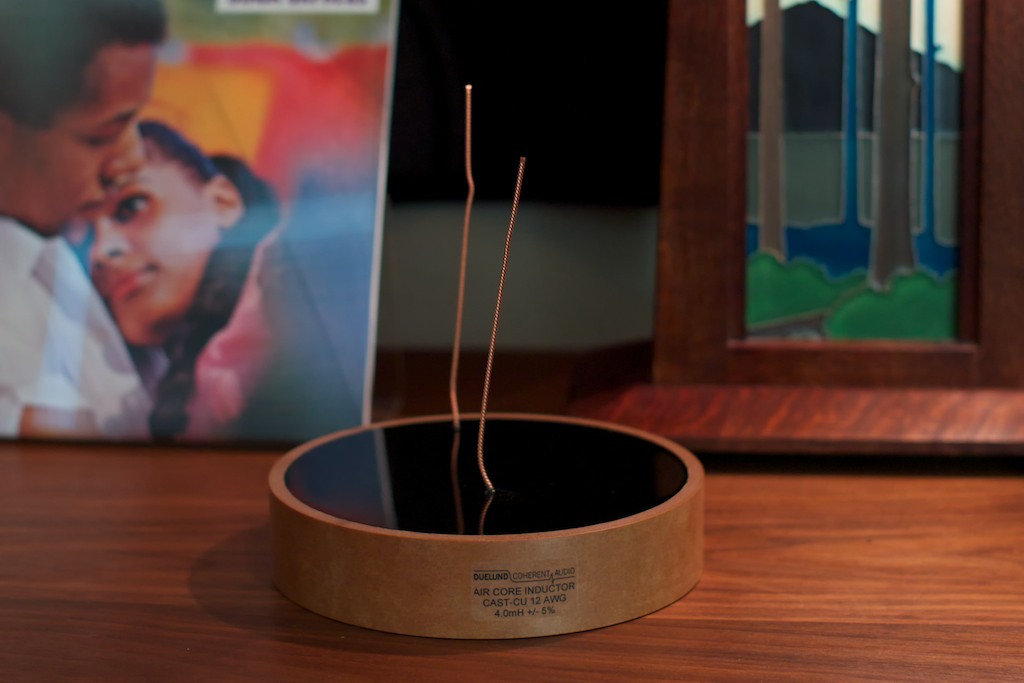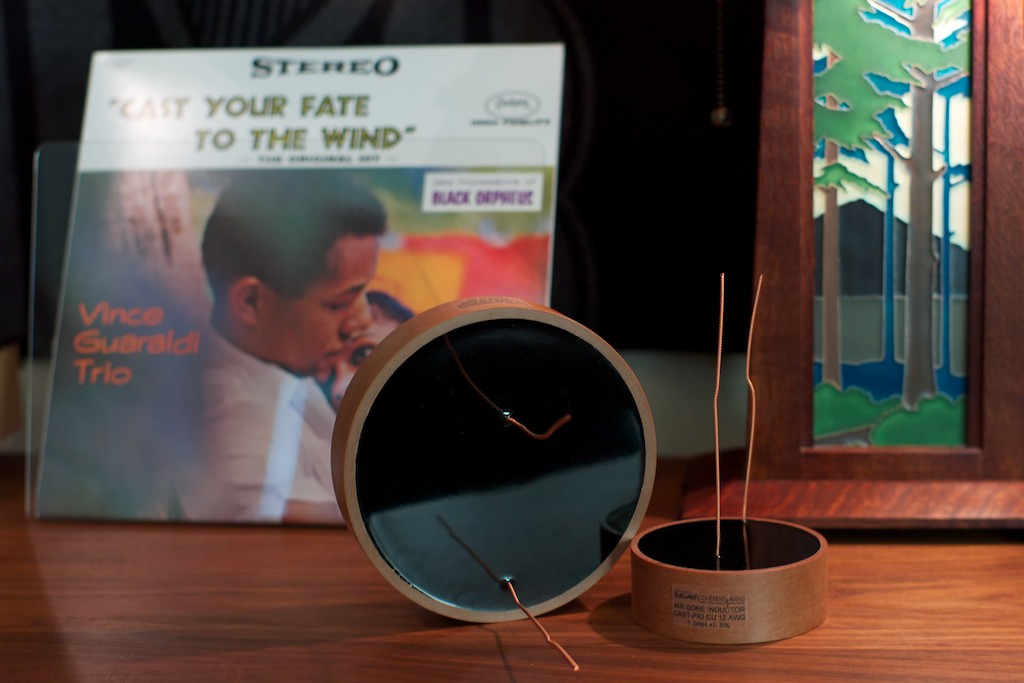I'm working hard writing the Duelund-Westminster External Crossover Project article for Positive Feedback Online right now. I can't even begin to guess how many hours I've got into this project between doing the project and writing about it - a lot - and I've enjoyed every minute of it!
I thought it would be fun to share part of the article with you now, and the rest of it when its published at Positive Feedback Online. Without further adieu here's Part 1 of the Duelund-Westminster External Crossover Project article:
Duelund Coherent Audio from Denmark:
The Duelund Coherent Audio / Tannoy Westminster Royal Special Edition Project: Upgrading the WRSE Crossover with Premium Duelund CAST Components
An article by Jeff Day
Over the last few years I’ve had a number of people tell me about how the Tannoy Westminster Royal Special Edition (WRSE) loudspeakers benefit quite significantly from upgrades to their internal wiring, connections, and crossovers. The first was a reader of my blog, David King, a fellow Tannoy Westminster Royal enthusiast in the UK. David told me about the positive results he realized when upgrading the internal wiring connectors, driver connecting plugs, binding posts, and speaker support system of his Tannoy Westminster Royal HE loudspeakers. David was kind enough to write a whitepaper detailing his modifications for the readers of my blog so they too could implement those upgrades into their own Westminster Royals. Westminster enthusiasts who have implemented David’s suggested modifications have seconded David’s opinion that these modifications provided a meaningful improvement to the Westminster Royal’s performance. You can read David’s whitepaper here.
Another Westminster Royal enthusiast who participates in my blog, Charalambos (Pambos) Ioannou from Cyprus, had also described the excellent results he had with moving the Westminster Royal’s crossover external to the loudspeaker, and then replacing the stock wire, capacitors, resistors, and inductors with premium versions. Pambos told me the improvements that resulted were not subtle at all, but rather dramatic & profound from both a musical & sonic standpoint, and that the ultimate performance potential of the Westminster Royal was unimaginably higher than most people realized was possible. You can find the links to these discussions here under the “Duelund Westminster Royal Special Edition Crossover Project” section.
I must confess that while I was intrigued with David’s and Pambos’ modifications and the positive results they reported, I was still quite happy with the performance of my own Westminster Royal SEs – they’re fantastic speakers just as they are. I was also a little apprehensive to do any modifications, because while I can solder acceptably well, I was not confident of my own ability to do surgery on my Westminster Royal SEs and successfully implement the recommended changes, so that was a factor as well. The idea of botching a modification to my beloved Westminster Royal SEs and possibly damaging them scared the bejesus out of me!
A number of events occurred at about the same time that made me feel more confident that it would be possible for me to go forward with the project of upgrading the WRSE crossovers with premium components, the first was when my friend Pete Riggle (Pete Riggle Audio Engineering) said that he’d be glad to lend a little ‘roll-up-the-sleeves’ sort of help should I be in need of it, and secondly, Pambos said he would be glad to share his insights from doing a number of Westminster Royal crossover upgrades, and thirdly, Mark Coles (Sablon Audio) had lots of great recommendations that would both simplify the WRSE project and further improve the performance, and finally, Dr. Paul Mills, Director of Research & Engineering at Tannoy (and responsible for the design of the latest version of the Westminster Royal SE and the Kingdom Royal) offered to provide advice and guidance as the project proceeded too!
Bolstered by the groundswell of support & encouragement, I decided to proceed with the project by upgrading the tweeter capacitors with some premium versions, removing the WRSE internal wiring connectors and then direct soldering the wires, and perhaps to be followed with upgraded inductors and resistors at some point in the future.
However, a very special sort of serendipity began to take place as I was discussing the project with Mark Coles (Sablon Audio) when he suggested that he introduce me to his friend Frederik Carøe, the co-founder of Duelund Coherent Audio in Denmark, whose company hand-crafts the beyond state-of-the-art Duelund CAST capacitors, resistors, and inductors.
During a very enjoyable discussion with Frederik over the telephone, Frederik informed me that another Positive Feedback Online writer and Westminster Royal enthusiast – the beloved audio luminary Dr. Harvey ‘Gizmo’ Rosenberg – was the first audio writer to bring the avant-garde audio design work of Steen Duelund to international attention. Both The Doctor and Steen Duelund have since left the planet, but their ideas & writings continue to stir the imaginations of audio enthusiasts and music lovers everywhere. As you get time, I suggest reading through Harvey’s articles related to Steen Duelund’s design ideas (1, 2) for additional background, as well as those articles by Steen Duelund himself (1).
Before The Doctor left the planet, on his blog he talked about how impressed he was with the results of upgrading the components in the crossovers of his Westminster Royal loudspeakers, which you can read more about here. When I told Frederik I was considering upgrading the capacitors in the high-frequency crossovers of my WRSEs, Frederik in essence told me, “Think bigger, MUCH bigger!” and thus the Duelund-Westminster project was born.
When Harvey upgraded his Westminster Royals’ crossovers, the Duelund CAST components did not yet exist, so Frederik suggested that we create a completely new set of high & low frequency crossovers for the WRSEs using his beyond state-of-art Duelund CAST capacitors, inductors, and resistors, to honor the memory of Steen Duelund and The Doctor, and to see what ultimate level of performance that we might wring from the Westminsters!
I thought that Frederik’s suggestion was an awesome idea and I am excited to be a part of it! I think The Doctor and Steen Duelund are smiling! Thank you Frederik!
Duelund Coherent Audio
For those of you who are not yet familiar with Duelund Coherent Audio, I would like to take a moment and acquaint you properly.
The principals of Duelund Coherent Audio, Frederik Carøe and Magnus F. Pedersen, started the company about ten years ago based upon their shared friendship with – and education & mentoring from – Steen Duelund. A mathematician by education, a music lover by passion, Steen Duelund’s quest for audio perfection inspired Frederik & Magnus to build the highest quality audio components possible without any consideration for cost constraints. All of the Duelund Coherent Audio components are handcrafted using natural materials to the maximum extent possible, because Frederik & Magnus (ala Steen Duelund) believe that natural materials give the optimum reproduction of the recorded music signal.
In 2004 Frederik & Magnus researched, developed, and built a new generation of state-of-art capacitors, inductors, and resistors based on Steen’s ideas to improve the performance of audio reproduction. In 2005 Steen passed away after a long illness, so he would not get to see their next generation CAST product line of capacitors, inductors, and resistors that Frederik & Magnus released in 2007, in their bid to go beyond the state-of-the-art of what was then considered possible. Frederik & Magnus were satisfied with their effort in developing the CAST components, feeling that they surpassed all of the existing benchmarks within their field, and the CAST components were products worthy of honoring the purist vision of their friend and mentor, Steen Duelund, whose mantra was “to never accept compromise”.
Frederik & Magnus continue to engage in research and to create new designs for specific or unique applications based upon the knowledge passed on to them from Steen, and in fact one of those new designs was an innovative CAST Mylar 200uF capacitor they developed specifically for the low-frequency crossovers of the WRSEs for the Duelund-Westminster project that are somewhat of a departure from their norm of materials choice - now that’s a really cool development that I’ll tell you all about in a moment!
The Tannoy Westminster Royal SE Crossovers
Let’s talk about the stock crossovers of the Tannoy WRSE loudspeakers for a moment. In the WRSE loudspeakers with their Dual Concentric™ drivers there are two physically separate passive crossovers in each loudspeaker: a high-frequency crossover located in the lower front of each loudspeaker, and a low-frequency crossover located in the upper back of each loudspeaker.
The crossovers are second-order on the low frequencies, and second-order compensated on the high frequencies. The crossovers use Clarity Cap polypropylene capacitors, non-inductive thick film Vishay resistors, very low loss laminated core inductors custom made for Tannoy, and a combination of proprietary high purity silver & Oyaide PCOCC copper hard-wiring. All in all these were very nice component choices.
Notably, the WRSE high-frequency crossovers also include treble controls that allow the owner to adjust the high frequency energy and roll-off via an autotransformer in the crossover circuit, so that the high frequencies can be tailored to the owner’s room, associated equipment, and personal preferences.
The role of the WRSE’s high-frequency crossover – located in the bottom front of the loudspeaker – is to allow the high-frequency information from the music signal to pass through to the high-frequency compression horn driver unit, while filtering out the low-frequency information.
Inversely, the role of the low-frequency crossover – located in the top of the cabinet above the Dual Concentric™ driver – is to allow the low-frequency information from the music signal to pass through to the fifteen-inch direct radiating low frequency driver while filtering out the high frequency information.
The WRSE crossovers use a combination of capacitors, inductors, resistors, and in the case of the high-frequency crossovers – autotransformers – to implement the filtering of the frequencies, to match the two drivers differing efficiencies, and to blend the frequency response of the two drivers into one smooth composite response.
The WRSE crossovers are extremely well designed, so the intent of the Duelund-Westminster project was to re-create the internal Tannoy crossovers’ design using the beyond state-of-art Duelund CAST capacitors, resistors, and inductors as external crossovers.
The Duelund CAST Copper Foil Paper-In-Oil Capacitors
Let’s take a look at the Duelund CAST copper foil paper-in-oil capacitors first. I asked Frederik Carøe if he would tell us a little more about their design and what makes them so coveted by the audio cognoscenti.
Frederik feels that the Duelund CAST copper foil paper-in-oil capacitors are the ultimate expression of Steen Duelund’s thirty-five years of research into perfecting capacitor design for audio use, and as Frederik said, “The legacy of Mr. Duelund is to never accept compromise, and that is a principle we proudly uphold in the Duelund CAST capacitors.”
Frederik told me that many capacitors today use an insulating plastic film as the dielectric because it makes them inexpensive to produce, but the problem with using plastic is that it noticeably degrades the audio signal, “With plastic you get what Steen would describe as an echo, masking the real details of the signal”.
So in the Duelund CAST capacitors Frederik doesn’t use any plastic, but rather only pure annealed soft copper foil in natural paper and oil, along with resonance control both inside and outside the capacitor. Each Duelund CAST capacitor is completely hand made in an incredibly labor intensive process:
“Foils of pure copper or silver are initially wound with paper to a certain value that is a good deal over the needed capacitance. Then the foil is put under vacuum pressure in an oil tank at high temperature for about a week, so that everything inside the winding undergoes vacuum impregnation and is permeated by oil. When this process is done, the resulting foil is wound by hand in a humidity and temperature-controlled room to an exact specification, and then it is placed back into the oil. Immediately after this process the winding is sealed by the use of a special lacquer, which is also used in the yacht industry to seal against moisture. This takes another week.”
“During this process a ring of vacuum impregnated paper has been readied with a base of our CAST material. The winding is heated and then placed in the ring & base assembly and CAST material is poured on top of it in five stages, with air bubbles in the CAST material being forced out by applying a very precisely controlled flame to the surface (yes really!). This process takes another week. Following this step the capacitor is measured and checked (as it has been at every step along the way), and if everything is ok, then we ship it to the customer. The total production time is typically six to eight weeks.”
Other than their obvious high quality, one of the most striking aspects of the Duelund CAST capacitors are their large size and heavy weight, which is due to their perfectionist design using natural materials and pure metal foil – they simply have to be larger than mass produced capacitors with this approach.
Frederik says the careful selection of materials and this no holds barred style of design provides dramatic benefits for audio applications:
“From a performance standpoint, the main thing is an absolute lack of coloration, and a much more natural presentation – things don’t float around but stay locked in time and space. How you perceive and understand the layers in the music becomes greatly enhanced, primarily because of the sudden silence in between notes. Micro and macro dynamics take on a whole new meaning. Mr. Duelund would liken it to drinking Coke your entire life and then suddenly having a drink of pure water.”
In the Duelund-Westminster Project we used the copper foil paper-in-oil version of the CAST capacitors, but silver foil paper-in-oil versions of the CAST capacitors are also available should you desire that.
The New Duelund CAST Mylar Capacitors
I mentioned earlier in this article that Frederik & Magnus developed an innovative CAST Mylar 200 uF capacitor specifically for the low-frequency crossovers of the WRSEs for the Duelund-Westminster project. The reason they did was because the low-frequency crossovers of the WRSEs have a 200 uF capacitor as part of the circuit, and a 200 uF Duelund CAST copper foil paper-in-oil capacitor would have been of such daunting size that it just wouldn’t have been practical for the project.
To give you an idea of what I’m talking about, in the photo below you can see some 150 uF Duelund CAST copper foil paper-in-oil capacitors next to a coffee cup for scale - they’re huge! Now imagine the even bigger size of 200 uF Duelund CAST copper foil paper-in-oil capacitors – they would be nearly the size of beer kegs!
Creating a Duelund CAST 200 uF capacitor of a more manageable size to use in the C4 position of the WRSE crossovers, while still maintaining a large degree of the performance of the CAST copper foil PIO, became an irresistible challenge for Frederik & Magnus!
So Frederik & Magnus set to work, and after considering their options, they decided to try using a metalized Mylar foil with the same construction techniques as they use for the premium CAST copper & silver PIO capacitors.
Normally Frederik & Magnus would have eschewed the use of a non-natural material like Mylar in one of their Duelund CAST capacitors, instead preferring only pure annealed soft copper or silver foil in natural paper and oil, but as Frederik told me, “The CAST Mylar capacitor is made from four separate Mylar windings. We found that to be the best compromise when size or cost is an issue. The windings are connected to create one 200 uF capacitor. The use of CAST dampening cancels out a lot of typical illnesses in such a design, and we are happy to see them tried in your Westminsters.”
Below you can see a photo of one of the final Duelund CAST Mylar 200 uF capacitors next to wine bottle for scale, and as you can see, Frederik & Magnus were very successful scaling down the CAST Mylar capacitor’s size to be more manageable. While the CAST Mylar may not offer the ultimate performance that the statement copper or silver CAST capacitors offer, it is – as you will find out later in this article – quite remarkable in its own right.
The Duelund CAST Air Core Inductors – A Breath of Fresh Air for Low Frequencies!
An inductor (also called a choke) is a passive device that stores energy in its magnetic field (a capacitor stores energy in its electric field). The Duelund CAST Air Core Inductor – as the name implies – utilizes an air core that pure annealed soft copper foil in natural paper and oil is wrapped around (instead of around a magnetic core as with many inductors). A capacitor is made using two foils with paper between the foils, which results in capacitance being created in the electric field between them. An inductor is one foil coiled up. I used the Duelund CAST Air Core Inductors in positions L1 and L2 of the WRSE low-frequency crossovers. The 4.0 mH Duelund CAST Air Core Inductor used in the L1 position of the WRSE low-frequency crossover is shown below.
The construction of the Duelund CAST Air Core Inductor is similar to the process used to create the Duelund CAST capacitors, where a foil of pure copper or silver are initially wound with paper around an air core to a certain value of inductance that is greater than the needed inductance. The coiled foil is then put under vacuum pressure in an oil tank at high temperature for about a week to permeate everything with oil. Then the foil is coiled by hand in a humidity and temperature-controlled room to an exact inductance specification, and it is then placed back into the oil. Immediately after this the winding is sealed with a special lacquer that takes a week to cure.
During this process a ring of vacuum impregnated paper has been readied with a base of CAST material. The coiled foil is then heated and placed in the ring & base assembly and CAST material is poured on top of it in five stages. A precisely controlled flame is then quickly applied over the surface to drive any air bubbles out of the CAST material. Following this step the inductor is measured and checked against controls to ensure quality. The total production time is typically six to eight weeks to make an inductor.
In the photo below you can get an idea of the size of these inductors compared to the LP just behind them – they’re huge! The 4.0 mH Duelund CAST Air Core Inductor (position L1 in the low-frequency crossover) is shown on the left sitting on end, and the 1.0 mH Duelund CAST Air Core Inductor (position L2 in the low-frequency crossover) is shown on the right.
Frederick told me, “As far as I know, the Duelund CAST air core inductors are the only paper in oil inductors commercially available to this day.”
Frederik pointed out to me that many people mistakenly think inductors aren’t as important as other circuit components because they typically deal with lower frequencies.
He said, “In fact it’s the total opposite, the lower registers are far more resonant in nature than high frequencies, which means resonance control becomes even more important. People are always slow to try the inductors, but when they eventually do, they are always amazed at the difference.”
The Duelund CAST Silver / Carbon Resistors
In the Duelund-WRSE project I used the Duelund Coherent Audio Silver / Carbon resistors exclusively in the crossover circuits (shown in the photo below).
Resistors are inherently simple electrical devices that are used to control the flow of current in a crossover circuit by providing a constant resistance that does not vary with the frequency of the signal, so they are useful for attenuating the signal to match the drivers’ needs by consuming excess power and converting it to heat.
On the Duelund website Frederik says:
“Thus far the resistor has been regarded as a necessary evil, something that was needed out of necessity but scorned for its negative impact on the fidelity of the signal. This has changed with the introduction of the Duelund Coherent Audio Resistors. When designing these components the task was that the voice coil of the speaker and the resistor be viewed as a whole rather than two separate entities. The Duelund CAST process applied to the top of the line resistor makes it an extraordinary component completely without peers. The result is a resistor which seemingly has no sound of its own and it allows the drivers to perform at their very best. Our “humble” opinion is that our resistors are the best “bang for the buck” upgrade available. Simply replace your resistors for unparalled transparency and dynamic ability.”
I asked Frederik if he could tell us a little about his Duelund Coherent Audio silver / carbon resistors:
“The Duelund resistor was created by Steen Duelund, as he found all other resistors fundamentally unsuitable for audio reproduction – being purely industrial by design. It consists of a complete rod with silver lead-outs in a paper tube, which is always made with natural materials, and in the CAST version it is highly damped against resonances. Used in series with a driver, it especially shines, allowing micro and macro-dynamics a full range of expression, unlike any other resistor type.”
Ok, that's it for now. Stay tuned for more on the Duelund Westminster Project!
Thanks for stopping by!





